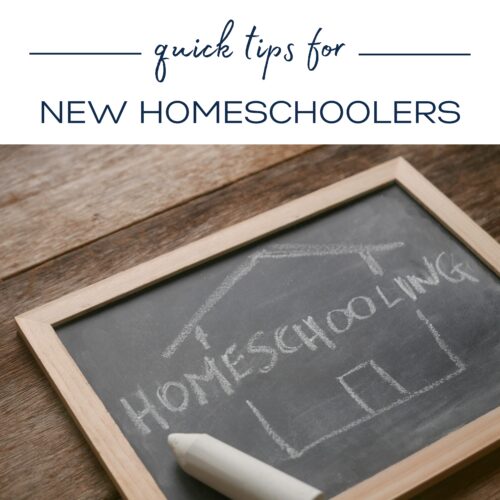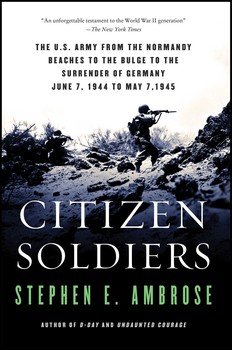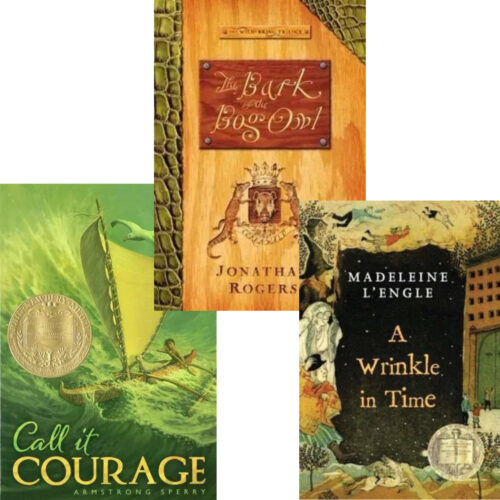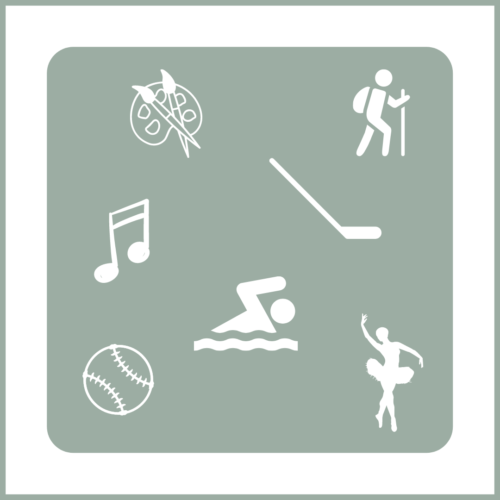Master Books Curriculum

Workbooks in Homeschooling: A Misunderstood Resource? Our CEB team has met a fair amount of homeschoolers who recoil a little at the thought of using workbooks in their homeschool. We get it—who wants to replicate the schools with their repetitive worksheets when we have this once-in-a-lifetime opportunity to give our children a rich, engaging, and living education? But what if workbooks are exactly what you need? What if we told you that workbooks could be the exact tool you’re looking for to help you provide an engaging education for your children? Introducing Master Books They are a workbook-based curriculum that should not be overlooked as you plan your homeschool year. What makes Master Books special? Their workbooks are: graded colourful Christian open and go cover a variety of subjects But are they rigorous? They are not highly academic, but they cover the basics. Some might even say they are, well, mediocre—meaning, “of moderate academic quality.” But doesn’t life sometimes call for mediocrity? We’ve all experienced seasons where mediocre meals, housework, or family time is the only option. Don’t be ashamed! We’ve all been there—or will be there. Is this a test of endurance… or contentment? Ask yourself this question when you find yourself in “that season”: Is the Lord testing you on how fast you can recover and get back to healthy eating, tip-top housework, and the most memorable family time? Consider that maybe it’s your contentment that’s being challenged. How are you responding? What’s your attitude when life doesn’t allow for “the best”? Who Are These Resources For? This resource is going to appeal to families who: need something simple as they transition from a school setting to a homeschool setting, especially families who are not ready to abandon a typical way of doing school are expecting a new baby, experiencing illness, traveling, or tackling a big move and need a resource that can be used fairly independently have a child who needs to just “get through” some language arts (or other subject) so they can indulge in delight-driven learning are accountable to authorities and need some quick box checking want to be assured they are covering the basics but want room in their week to: have extensive and enriching family-centred morning times, read through booklists, go on field trips, dive down educational bunny trails, and pursue passion projects Read number 5 again! Did you notice it? Yes, workbooks can actually give you peace of mind and freedom to pursue all the other amazing educational opportunities that are afforded to homeschool families. Do What Works for You You need something that will work for YOUR family, in YOUR situation. Maybe this year it’s Master Books. By Adrianne Curwen Adrianne is a wife to a public-school educator/administrator and a homeschooling Mama to seven children, ranging in age from 8 to 24. In 2021, the family added a son-in-law to the bunch. She believes that we have a unique opportunity as homeschoolers to design individualized education that suits giftings, interests, and passions. She and her husband have used a blend of registered homeschooling, enrolment with independent DL schools, and participation in public trade school programs to design individualized programs for their children. She is passionate about using as many read-alouds, picture books, novels, and conversations to educate her children but also gets excited by the amazing homeschool-designed curriculum that’s out there. Adrianne is thrilled by her new role as Creative Director and is grateful to have an opportunity to learn something new. She is grateful, every day, for her saviour, Jesus Christ, and has no greater joy than when she sees her most important mission field walk with Him.
Quick Tips for New Homeschoolers

Getting Started: Tips for New Homeschoolers Making the decision to homeschool is often the most difficult part of the entire process. Once you’re in, you’ll want to set a firm foundation with these highly recommended books. It can be challenging to see beyond the traditional school model, but these books will help you cast a vision and give you the courage you need. If you are a beginner in the homeschooling journey, below are some quick but effective tips for new homeschoolers. Teaching from Rest Awaking Wonder For The Children’s Sake Homeschool Community New homeschool families often wonder who will make up their community. You might need to do some research, ask around, or maybe just go and hang out at a local educational attraction during school hours. Also, consider bringing grandparents into your support system. If they are unsure about their new role as a grandparent of homeschoolers, let them know about this blog post. Want more tips for new homeschoolers? Continue reading. Deschooling Deschooling, also called unschooling, is simply a process of untangling beliefs about education and decompressing from the pressure of traditional school. The best way to do that is through field trips, library visits, conversations, nature walks/study, reading aloud to your children, and doing school work while in your pajamas. New homeschooling families need time to evaluate their beliefs about education, discover how their children learn best, and even how their child’s day should look. Deschooling includes coming together and learning as a family, discovering your child’s interests, and embracing a new lifestyle. Take weeks or even months to move through this stage. Once you are ready to introduce the curriculum, Beautiful Feet Books has incredible resources that are perfect for that delicate stage of transitioning from a traditional school mindset to a homeschooling one. Ease Into Homeschooling Some families prefer to ease into homeschooling by using a traditional workbook approach. Master Books resources are ideal for new homeschool families who are feeling wobbly about completely abandoning the structure and set-up of traditional schools. The workbooks are straightforward, easy to use, and cover a variety of subjects and grade levels. Still Overwhelmed? Start with books and specifically reading aloud! Yes, even to your readers. This is actually one of our favorite tips for new homeschoolers. Reading aloud is a relationship builder. Check out our free read-aloud booklist and get started right away. We also have a free read-aloud planner. Need more convincing and help getting started with read-aloud? Grab any of these books and you’ll be well on your way. Give Your Child the World Honey for a Child’s Heart The Read-Aloud Family Jim Trelease’s Read-Aloud Handbook Need a one-on-one consultation? Contact the office and book a Curriculum Consultation with Hester. Phone: 604-505-2194 or Email
Victorian Era Books

Queen Victoria was born on May 24, 1819, and began her reign in 1837 at 18 years of age. Her reign, known as the Victorian era, lasted for 63 years and seven months, making her the second-longest reigning British monarch, surpassed only by Queen Elizabeth II. In this blog, let’s delve into these popular Victorian Era books. Let’s Explore Our Top Picks of Victorian Era Books In the Days of Queen Victoria, by Eva March Tappan, will take your younger readers (8+) on an engaging journey through the life and reign of one of Britain’s most iconic monarchs. Consider purchasing the In the Day of Bundle to explore other British monarchs. Assign your older readers (13+) to explore social class and the strict social hierarchies that the Victorian Era (1837-1901) is known for through the life of Pip, an orphan who rises from humble beginnings in the classic Dickens novel, Great Expectations. While the themes and language are complex, this novel (which is one of our top picks for Victorian Era books) is accessible to young teens with advanced reading skills. Its depth will also be fully appreciated by older teens and adults. (*The Ignatius Critical Editions of the great works of Western civilization enable readers to enjoy classics such as Great Expectations in the company of some of the finest literature professors.) Another incredible classic that will give your students a sense of the social injustice that often characterized the Victorian Era is Tess of the d’Urbervilles. It’s a novel that you may want to hold off on until your students are closer to 16 due to some mature, albeit not graphic, sexual content. In the beautiful cloth covered edition that we carry, bestselling author, literature professor, and avid reader Karen Swallow Prior will guide your students through the story, helping them read this classic in light of the gospel. Art, literature, and Aestheticism were profound influences in the Victorian Era, and so here’s one of our favorite Victorian Era books. The classic novel, The Picture of Dorian Gray, another Ignatius Critical Edition explores themes of aestheticism and the nature of beauty and corruption. This novel is best suited for 16+ as it contains morally complex elements. Bring history to life by enriching history studies with great novels.
Meaningful March Read-Alouds

We’ve pulled together a great stack of March read-alouds for you and your family. Patrick: Patron Saint of Ireland recounts the life of Saint Patrick. Through beautiful illustrations and simple storytelling, the book follows the journey of Saint Patrick from his youth in Britain to his kidnapping by Irish raiders, his years as a slave, his escape, and his eventual return to Ireland as a missionary. Rechenkas Eggs is a charming picture book by Patricia Polacco. The story follows an elderly woman named Babushka who lives in a small Russian village and owns a goose named Rechenka. Through vibrant illustrations and heartfelt storytelling this tale captures the spirit of generosity and the joy of Easter celebrations. Tale of Three Trees is a beloved tale that tells the story of three trees with big dreams. Each tree aspires to greatness: one wants to be made into a treasure chest for precious jewels, another dreams of becoming a mighty ship that carries kings, and the third hopes to remain tall and point to God. However, as their lives unfold, each tree’s destiny turns out differently than expected. The Jesus Storybook Bible presents the overarching narrative of the Bible, from Genesis to Revelation, with a focus on Jesus Christ as the central figure. Unlike traditional Bible storybooks, it doesn’t merely recount stories, but it highlights the connections between each narrative and how they point towards the ultimate story of God’s redemption through Jesus. Little Pilgrims Progress is a children’s adaptation of John Bunyan’s classic allegory “The Pilgrim’s Progress.” Retold by Helen L. Taylor, it follows the journey of a young boy named Christian as he embarks on a quest from the City of Destruction to the Celestial City. Miss Maple’s Seeds is a delightful children’s story that revolves around Miss Maple, a nurturing and caring character who collects lost seeds and cares for them until they are ready to find their forever homes. Goodbye Winter Hello Spring celebrates the transition from winter to spring. Through beautiful illustrations and simple text, the book follows a young child as they explore the changes in nature, from the melting snow to the blossoming flowers and the return of animals.
Exploring Our World with Five Favourite Books

These engaging and rich resources will bring geography to life for you and your children. Material World Maps Book of Nations Hungry Planet Children Just Like Me Traditional textbooks can be dry and encyclopedic. Geography is not just about physical landscapes; it’s also about people, their stories, and their connection to the land. With these resources, your children will learn interesting facts as well as the interconnectedness between physical and human geography. These resources contain pictures that will help your children connect emotionally with the places and people they read about, and the descriptions, and stories will help your children explore diversity and help your children to think critically, drawing some of their own conclusions. Encourage lifelong self-directed learning with quality books. You can find them all on our website. Looking for other geography resources? You’ll find them here.
Citizen Soldiers by Stephen Ambrose

Written in the late 1990’s, Stephen Ambrose’s “Citizen Soldiers” draws upon oral histories, memoirs, and letters of Allied and German World War II combat veterans to write an engaging narrative that follows U.S. combat soldiers from the D-Day landings at Normandy to the surrender of Germany in 1945, inviting the reader to join his harrowing and inspirational account of the final eleven months of the war. Best known for his book-turned-TV-miniseries, “Band of Brothers”, Ambrose writes in a straightforward and readable manner, accessible to all who are interested in history and the strength of human character found in the common and everyday citizens who enlisted and were drafted into war. Following the timeline from the day after D-Day, the book includes three sections of contemporary black and white photographs that follow the chronological order of the chapters. Other features of the book include detailed maps showing battlefronts and army progress, meticulous footnotes from each chapter, an exhaustive bibliography, a comprehensive index, and a complete list of the full names of U.S. and German veterans whose letters, memoirs and oral histories were used in the crafting of this account. While the content is serious, mature grade 11 and 12 students can handle the material, and while the language used by soldiers in war can be punctuated with cursing, the direct quotes of combat veterans included by the author are never used in a gratuitous or entertaining manner. Please note that there is a brief reference to how leadership in different armies would respond to reports of soldiers assaulting local women (Russian and German Army leadership encouraged it, US Army court-martialled and sometimes executed offenders from its own ranks). This book can accompany and complement a homeschool curriculum of 20th Century World History. At just under 500 pages, a student, with regular reading, will be able to fully understand the material, enabling them to speak with intelligence on an important event from our recent past. Students can use the strategic maps to further explore the geography of the surrounding areas in Europe. Most importantly, young people reading a first-hand account can be shown extraordinary examples of character. Finding ways for older students to demonstrate their understanding through essays, paragraphs, creative writing, artwork, discussions and dioramas will not be difficult, as there are many topics that can be gleaned from the material. Citizen Soldiers is an excellent account of a very specific time period of a war in which common men and women displayed uncommon bravery not to conquer but to liberate. Jeffrey Curwen, BA, Certificate in Liberal Arts, Professional Teaching Certificate, M.Ed Jeff is a Canadian homeschool dad of seven kids, and husband to one amazing woman. He has worked as a public school teacher, independent DL school teacher, and secondary school administrator. He enjoys coffee, jazz and almost anything written on 20th Century History, US Foreign Policy and JFK. He’s grateful everyday for his wife, children and his Lord and Saviour, Jesus.
Read Aloud to Your Readers!

Many children are reading independently by the intermediate years. With my oldest two, it didn’t occur to me to keep reading to them once they were flying solo. My job seemed complete; the skill of reading and the habit of reading were set. It was natural to read books aloud to the following two children for much longer as those skills and habits were set much later. Also, in those early years of parenting, I was always eager to get to the next stage. Eventually, my thinking shifted and I did everything in my power to settle into each stage and stay as long as possible. My youngest four have been read to a lot and it is a stage in which I’m in no rush to let go. Even my 16-year-old, 6-foot-tall son is part of our morning time read-aloud. Continuing to read aloud to your readers comes with some perks so keep going! Factory Settings Every family develops a family culture. Have you put thought into what you want your family culture to look like, or is your family operating on factory settings? Being purposeful about developing a culture of reading aloud is a very simple way to break free from those settings. Family Bonding There is no shortage of things that pull families away from each other. We need to be purposeful about protecting the things that draw us together. There are expensive and time-intensive ways to accomplish this and then there are the simple day in and day out rhythms of life that I would suggest work even better: eating together, reading aloud, and worshipping together. I’ve only just begun reading The Life Giving Home, but if you want to be inspired as you build family culture and bonding I think this would be a good place to start. Avoid Losing Ground Your readers lose ground when you have been reading aloud to them and then stop because they are reading independently. The vocabulary and writing that your newly independent readers interact with will be simple…by design. Continue to read aloud! We want them to be bumping into language that is above their reading level, not to mention the added benefit of hearing how to properly pronounce difficult words. Life-Long Learning Reading aloud together allows you to demonstrate how to soak in everything you can from reading a book. After completing a chapter or two expand your knowledge of the country in which the story is set by pouring over a map book together. The Peterson Field Guides are not just for nature walks! They are a great resource to use as you explore books together. Grab one off the shelf to learn a little more about the animal or flower that was mentioned. YouTube and Google work as well, and we use them but I also love building a family library. Whatever tools you decide to use, the idea is to be reading aloud with your children. It gives you the opportunity to show them what it looks like to be a curious lifelong learner. Build Communication Skills When you read aloud to your children you’ve opened the door to all sorts of conversations and communication skill-building. If you are reading to multiple children it’s a great way for them to learn that others may develop opposing opinions, and have differing perspectives. This summer I’m diving into Teaching the Classics. If you are interested in using dialogue and conversation more purposefully in your homeschool then you should check it out too. Discussing books gives children an opportunity to practice moving their thoughts, ideas, and opinions from their minds to the spoken word. It’s such a simple thing but it builds communication skills. Many families use narration as a foundation to build writing skills. Honestly, it’s not something we’ve been super successful with but its value became very obvious to me as we tried to tackle Writing with Ease. The skill that is developed with this program was a real challenge for my children. I suspect that solid narration skills would have helped. We carry a bunch of narration resources; I have my eye on Know and Tell by Karen Glass. Keep Reading Aloud! We all live in a sea of amazing homeschool ideas. You need to know that you can’t possibly do them all and in fact, the “good” homeschool mom is not the one who tries to do it all. You would be wise to slow down, think things through, and be purposeful and prayerful about the homeschooling culture you want. It will mean saying no to things…even good things. Having said all of that, reading aloud to your children is foundational and not a trend. It’s worth making time for. by Adrianne Curwen Adrianne is a wife to a public-school educator/administrator and a homeschooling Mama to seven children, ranging in age from 8 to 24 and in 2021 the family added a son-in-law to the bunch. She believes that we have a unique opportunity as homeschoolers to design individualized education that suits giftings, interests, and passions. She and her husband have used a blend of registered homeschooling, enrolment with independent DL schools, and participation in public trade school programs to design individualized programs for their children. She is passionate about using as many read-alouds, picture books, novels, and conversations to educate her children but also gets excited by the amazing homeschool-designed curriculum that’s out there. Adrianne is thrilled by her new role as Communication Specialist for Classical Education Books and is grateful to have an opportunity to learn something new. She is grateful, every day, for her saviour, Jesus Christ, and has no greater joy than when she sees her most important missions field walk with Him.
Avoid Extra Burdens with Extra Curricular Activities (5 Tips)

So many options, so little time, and a limited budget! How should a family go about deciding where to invest their limited time, money, and energy when it comes to extra-curricular activities? Talk to any team sports coach and they will be able to list off all the reasons why team sports are the investment you should make. The martial arts master, the dance teacher, the swim coach, the outdoor enthusiast, the theatre director, and the music teacher will also have an equally convincing list. Over the years, our family has been involved in a variety of extra curricular activities and there have been times when we’ve regretted our decisions and there have been investments into activities from which we continue to benefit. Sometimes we parent with a bit of a default setting; without much thought, we sign our children up for activities we were involved in or what our friend group is involved in. Instead, we need to be purposeful. Five Things to Consider When Choosing Extra-Curricular Activities 1. Pray! Ask the Lord for direction as you consider extra-curricular activities for your children. They may not be interested in the same things you are. He knows them and He knows their future so spend time asking Him to guide you. 2. Consider your finances and be creative. On more than one occasion we were able to barter with instructors for discounted rates; it doesn’t hurt to ask. Extra-curricular activities should not become a financial burden so avoid any mindset that might cause you to take on more than you can comfortably afford. Comparing what your family is able to take on compared to another is a fruitless exercise and that goes for more than just finances. Not all families are set up to take on high levels of time or energy commitments. 3. Discuss what you value when it comes to extra-curricular activities. What are you really looking for? You might find that you can cross a few options off your list once you are clear about your values and maybe there is a better way to get what you are looking for. 4. Do your research! You need to know how an activity will affect things like church attendance, family mealtime, and your weekends. Be mindful of the effect certain activities will have on family time. 5. Don’t fall prey to the pressure to start too young. You won’t regret keeping life simple during the early years. There are so many things you can do as a family that will help prepare your children for any future activities so go skating, head to the pool, and buy some rhythm instruments. If you are interested in introducing your children to the study of music take a look at the resources below. How to Grow a Music Lover Music Study with the Masters Musical Instruments – Coloring Book Great Composers – Coloring Book Springman’s Music CD by Adrianne Curwen Adrianne is a wife to a public-school educator/administrator and a homeschooling Mama to seven children, ranging in age from 8 to 24 and in 2021 the family added a son-in-law to the bunch. She believes that we have a unique opportunity as homeschoolers to design individualized education that suits giftings, interests, and passions. She and her husband have used a blend of registered homeschooling, enrolment with independent DL schools, and participation in public trade school programs to design individualized programs for their children. She is passionate about using as many read-alouds, picture books, novels, and conversations to educate her children but also gets excited by the amazing homeschool-designed curriculum that’s out there. Adrianne is thrilled by her new role as a Communication Specialist for Classical Education Books and is grateful to have an opportunity to learn something new. She is grateful, every day, for her saviour, Jesus Christ, and has no greater joy than when she sees her most important missions field walk with Him.
Clear the Confusion about Chapter Books

A simple and universal definition is not so easy to come by and the confusion seems to enter with the higher-level chapter books. Where is the cut-off? At what point is a book considered a novel? And does it even matter? In this blog, let’s learn more about chapter books and clear the confusion surrounding them. Early Reader Books, Chapter Books, and Intermediate/Middle-Grade Novels are all designed with a particular reading level in mind and they have distinct differences. Early Readers are designed with beginners in mind. They have pictures, and the words, font, and spacing are chosen carefully to fit a new reader’s ability and stamina for reading. Intermediate/Middle-Grade novels are designed for more advanced readers; they are full-length novels but they are still designed with children in mind. The content and formatting are more mature. What is a Chapter Book? Chapter books fit in between those two categories and are generally geared towards 7-10-year-olds. They are usually a moderate length, roughly 2,000-10,000 words and the writing is more complex. Chapter books are an important category of books and are often considered “make or break books” because they are the gateway to more advanced reading. Chapter books are not full-length novels but they are divided into chapters. The chapters are short, they may contain the occasional illustration, but they contain large blocks of text. A well-formatted chapter book considers the font choice, spacing, and the amount of white space on a page as the entire point of chapter books is to NOT be intimidating to a young reader. Although chapter books are an important tool in bridging the gap between early reader books and novels, not all children need them. Some children bypass chapter books or move through the chapter book stage very quickly and that’s ok. The hurdle here is keeping them challenged without introducing themes beyond their years. It is equally common to have children for whom chapter books become a staple for an extended period of time. These fledgling readers also need carefully selected books but for different reasons. We’ve come up with a few things to consider as you carefully curate your chapter book library. Chapter Book Tips 1. Your Chapter Book Library doesn’t have to be filled with drivel. There is quality literature to found in chapter books. 2. If you are looking for chapter books to spark interest in reading start with something your children are already interested in. 3. Consider the length of the book and the length of the chapters as not all chapter books are created equal. Start small, especially for those wobbly readers. We don’t want to scare them off. Give them a quick win! 3. Take a look at the font size and spacing. The tiny type and compressed spacing can be overwhelming for children as they transition to independent reading. 4. Consider a “you read to me and I read to you” approach. This could be page by page or chapter by chapter. 5. Don’t stop reading aloud to your children. It is invaluable even for advanced readers. If you want to learn more about connecting with your family through reading aloud then you’ll want to get your hand on this book. The Read-Aloud Family It’s important to understand what you are looking for when you are building a stack of chapter books for your young readers. Take care to match your reader with the right book as you don’t want to reading to become drudgery. More of Our Favorite Chapter Books: Adventures with Waffles The Whipping Boy The Hundred Dresses Sarah, Plain and Tall by Adrianne Curwen Adrianne is a wife to a public-school educator/administrator and a homeschooling Mama to seven children, ranging in age from 8 to 24 and in 2021 the family added a son-in-law to the bunch. She believes that we have a unique opportunity as homeschoolers to design individualized education that suits giftings, interests, and passions. She and her husband have used a blend of registered homeschooling, enrolment with independent DL schools, and participation in public trade school programs to design individualized programs for their children. She is passionate about using as many read-alouds, picture books, novels, and conversations to educate her children but also gets excited by the amazing homeschool-designed curriculum that’s out there. Adrianne is thrilled by her new role as Communication Specialist for Classical Education Books and is grateful to have an opportunity to learn something new. She is grateful, every day, for her saviour, Jesus Christ, and has no greater joy than when she sees her most important missions field walk with Him.
Have You Been Missing Out on Wordless Books?

Invite your children to co-author a story! Literacy involves much more than reading words on a page and wordless books are an often overlooked tool in the literacy toolbox. Have you been overlooking them? I have! “Reading” wordless books increases vocabulary. Your children have two sets of vocabulary: one they can understand when they hear it but not use and one they can understand and properly use in a sentence. Reading wordless books challenges and increases that second set of vocabulary skills. “Reading” a wordless book gives your children an opportunity to practice building a story long before they can write one and collecting thoughts and verbalizing them is foundational to writing. Wordless books are also wonderful for children with diverse language backgrounds or language delays. “Reading” a wordless book ignites the imagination and creativity and develops language through discussion. Critical thinking is exercised as children “read” wordless books; they must make sense of the story, interpret the images and understand the sequence of events. There is no right or wrong way to read a wordless book but here are a few tips. Read the title and study the cover; make predictions about what the story will be about. Enjoy the pictures together, look closely at the images and simply chat about what you notice. Start from the beginning and re-read the story to your child. Later, you can read a page and they can read a page. Once your children have caught on, you can assign them a wordless book to read and then come back to share their creation. Wordless books are a great pre-school activity as they boost pre-reading skills. Pancakes for Breakfast by Tomie DePaola is a wordless picture book about the trials an old woman encounters as she attempts to make pancakes for herself. Up and Up by Shirley Hughes is a favourite wordless book and a must-have! Your children will learn all about the differences between two cultures without ever reading a word in Jeannie Baker’s Mirror. The Snowman by Raymond Briggs is a wordless story with the hazy softness of air in snow. Wordlessly two companions walk along in Owl Moon by Jane Yolen, for when you go owling you don’t need words. by Adrianne Curwen Adrianne is a wife to a public-school educator/administrator and a homeschooling Mama to seven children, ranging in age from 9 to 26 and in 2021 the family added a son-in-law to the bunch. She believes that we have a unique opportunity as homeschoolers to design individualized education that suits giftings, interests, and passions. She and her husband have used a blend of registered homeschooling, enrolment with independent DL schools, and participation in public trade school programs to design individualized programs for their children. She is passionate about using as many read-alouds, picture books, novels, and conversations to educate her children but also gets excited by the amazing homeschool-designed curriculum that’s out there. Adrianne is thrilled by her new role with Classical Education Books and is grateful to have an opportunity to learn something new. She is grateful, every day, for her saviour, Jesus Christ, and has no greater joy than when she sees her most important missions field walk with Him.
The Dog Who Wouldn’t Be (Book Review)

Here’s an honest review of the book The Dog Who Wouldn’t Be. “The prairies could be only half real to a boy without a dog.” ~ Farley Mowat When I randomly picked up Mowat’s memoir about his dog Mutt, “The Dog Who Wouldn’t Be“, little did I know that our family would be engaging with one of our favorite read-alouds of 2021. We immensely enjoyed Farley Mowat’s more well-known book, “Owls in the Family”, years prior. The author described his childhood, caring for two wild owls who each had such distinct personalities and quirks. When I found out Mowat had a story similar, but about his childhood dog, I was all in! I love dogs, and so do my children, but that’s not a requirement to enjoy the story. The qualities of this book are many, starting with Mowat’s strength as a writer; his vocabulary is more vigorous than books published today. His sentences are a joy to read! Mowat always has a strong sense of place in whatever he is writing, and the audience gets a clear picture of both the landscape and also the regional culture of the area he lands himself in. In The Dog Who Wouldn’t Be, he writes about his childhood in Saskatoon, Saskatchewan, but also small towns and villages nearby. I have looked up a lot of his books to see if this atmospheric and geographical language continues, and I’m happy to say that it appears it does, and he has lived all over Canada. I can’t wait to learn about some of the provinces I’ve never (yet!) been able to visit, through his words and descriptive setting. With Mowat’s youthful narration, the reader is absolutely delighted with the hilarity, escapades, and downright orneriness this boy and his dog can get into. He is perhaps eight years old when the book starts, and the book ends when he’s nearing adulthood. Each chapter is usually tied to something the family does frequently (hunting, sailing, etc.) and how Mutt gets himself involved…for better or worse. Mutt has an almost human-like personality, and there is one section about him trying to round up ducks in a small pond that is quite memorable. The three of us reading together were crying and endured stomach aches from laughing so hard at this dog’s determination and ingenuity throughout the chapter. Mowat takes his precise writing skills and humour, his passion for nature and place, and his deep love for his childhood dog, Mutt, and has written a simply superb book that will entertain everyone in the family. _________________________________________________________________________ My name is Sarah Mast and I homeschool my two kids in Ft. Langley, BC. One of my favorite aspects of homeschooling is the community gained, and I volunteer with a local support group to help foster that and connect others. My family loves the outdoors and travelling, and our weekends include skiing, swimming, hiking, or biking depending on the season. I found Classical Education Books at a conference and noticed their well-curated selection of children’s books. I kept tabs on their collection of the classics and hard-to-find books and reached out. Now I get to help customers hone their collections, and work on the ever-growing inventory here at CEB!
Curb the Christmas Chaos

I hope you’ve had a year that was full of contentment, productivity, and times where you knew that God’s grace was upon you. I pray that you will be determined and purposeful to find time to sit with God’s word in your lap and soak in the details of the very first Christmas. Because this time of year can become too chaotic to be calm and contemplative, I have a few quick suggestions that might help curb the chaos. Christmas is a season, not a day! If your family follows the traditional Christmas calendar, then the Christmas season started on the last Sunday of November with the beginning of Advent and won’t end until January 6th. That is plenty of time to fit in the decorating, hosting, baking, wrapping, and celebrating; if it’s not then you have too many tasks on your list. Once you embrace Christmas as a season, then those sugar cookies you bake every year…you know the ones, they require refrigeration before you can roll them out, then they need to be baked, then cooled, then iced…consider baking them as a special treat for New Year’s Eve or on one of the Twelve Days of Christmas (December 25th– January 5th). You may need to think outside the box, it may mean bending some long-standing traditions, but it will help relieve some pressure. Make Lists If you are not a list maker, then this is a perfect time of year to sit down with pen and paper and get yourself organized. List making is a sure way to add calmness to Christmas and it is the simplest way to help you get organized. Lists help you re-evaluate; there may be items on your list that you simply must let go of. Lists also help to get the clutter out of your mind and onto paper. Invest time today in figuring out what you are making for Christmas dinner, the list of ingredients you need for those sugar cookies, and what gifts still need to be bought! This time investment will pay off! Never accept invitations on the spot. Always answer with, “I’ll check my calendar and get back to you”. And did you know that you can decline an invitation even if your day is free? Yes, it’s true! I encourage you to look at your calendar and evaluate your week, not just the day. You can gracefully decline without giving a reason and simply offer another time that works better for you and your family. I enjoy the Christmas season and like to participate in all the things: gift-giving, decorating, baking, hosting, crafting, and other activities. Over the years, I’ve learned how to gracefully decline invitations, how to be more organized, and how to set a calm pace. I hope you’ve been able to glean even just a little something. ______________________________________________________________________ by Adrianne Curwen Adrianne is a wife to a public-school educator/administrator and a homeschooling Mama to seven children, ranging in age from 8 to 24 and in 2021 the family added son-in-law to the bunch. She believes that we have a unique opportunity as homeschoolers to design individualized education that suits giftings, interests, and passions. She and her husband have used a blend of registered homeschooling, enrolment with independent DL schools, and participation in public trade school programs to design individualized programs for their children. She is passionate about using as many read-alouds, picture books, novels, and conversations to educate her children but also gets excited by the amazing homeschool-designed curriculum that’s out there. Adrianne is thrilled by her new role as Communication Specialist for Classical Education Books and is grateful to have an opportunity to learn something new. She is grateful, every day, for her saviour, Jesus Christ, and has no greater joy than when she sees her most important missions field walk with Him.
It Won’t All Stick

As I’ve entered my 10th year homeschooling this Fall, I wanted to send some encouragement your way to those of you who are just starting out, or who have only been homeschooling for a short while. Homeschooling families often experience wells of internal pressure, wondering, “how will we complete all of this?” The pressure can also be external as well-meaning family and friends express concern over learning gaps (and socialization). This pressure can positively wreck a new homeschooling family’s peace of mind and drift their course off path if sharp enough. I need to let you know that of all the sticky notes of information that we put before our children during their homeschool years only some will stick and crinkle with age, most won’t remain on the mirror. Homeschooling quickly becomes a lifestyle, and you begin to think less and less of ‘school-lessons’ and instead, just ‘life’ as the years press on. Diligence in academics (over recalling facts), consistency in character-building, perseverance in physical training, fellowship with peers and family, extracurricular experiences, and a growing faith in God create a solid and holistic soul. Consider examples from my family. I have students who are flustered by a lot of math yet push through the discomfort to do about 10-15 minutes per day, even in the summer. It is this diligent character that I want to stick. Stories stick and so it is the moral lessons that are built upon living books that will stand the test of time. It is the routine and habit of moving our bodies along with the seasons (lake swimming, hiking, etc.) that will reach into their adulthood and make a difference. And the community that is built with regular church attendance and the faith that is built as we face challenges and are witness to God’s love, care, correction, and goodness that we want to see still sticking as time goes on. Swap out a few activities and your family is just like mine. Perhaps you have not considered yourself to be nurturing a whole person because these things don’t tick off provincial learning outcomes. The majority of your homeschooling role is to bolster the person and celebrate the sum of the whole, not just complete the small academic portion of each individual. Even during difficult seasons where one may feel that schooling falls by the wayside, there is still forward motion. The human brain is curious and driven to keep learning and parents hold the rudder, guiding our young children on what to learn. But they will inevitably be the ones to keep the boat going. And whether a lackadaisical summer-day row, a fever-pitch race, or a leak in the boat, every bit is momentum towards who they will become. We have a grand privilege to watch every part of it and God uses it all including our persistent work and love. The sticky notes that stick? Those are the glimpses of the people they are becoming. The student may forget the dates of past wars, or might not remember how to solve quadratic equations, but does any of this matter in the formation of a human being who is developing to reflect God’s glory? Also, those sticky notes that stick contains their gifts, talents, and aspirations; they will remain and likely blossom into something beautiful over time. Feed and nurture those! As you look back, the crinkly and aged yellow paper that is still on the mirror were previews to who they are becoming. We will never get to all the read-alouds, or every science lab, but we can reorient our expectations to provide security and love to the growing immortal soul in front of us. “How can it be a large career to tell other people’s children about the Rule of Three, and a small career to tell one’s own children about the universe? G.K. Chesterton ____________________________________________________________________ My name is Sarah Mast and I homeschool my two kids in Ft. Langley, BC. One of my favorite aspects of homeschooling is the community gained, and I volunteer with a local support group to help foster that and connect others. My family loves the outdoors and traveling, and our weekends include skiing, swimming, hiking, or biking depending on the season. I found Classical Education Books at a conference and noticed their well-curated selection of children’s books. I kept tabs on their collection of the classics and hard-to-find books and reached out. Now I get to help customers hone their collections, and work on the ever-growing inventory here at CEB!
Sensing God (Book Review)
Here’s my honest review of the book “Sensing God” by author, Joel Clarkson. I have long been a listener to famed homeschool parent and author Sally Clarkson and her podcast At Home With Sally. Her words drip with encouragement for parents with children of any age (including adult children) as she shares the struggles and joys of both raising children in the Christian faith and homeschooling over many decades. Over the years, I’ve discovered that all of her four homeschool-graduated children are creative in unique ways, and I’ve gone on to follow their work as well. It is challenging, relevant, and unique within their own skill-sets and personalities. The child I “knew” the least about was Joel. He is perhaps most well-known for his narration in The Green Ember series; or even his compositions and music on Spotify, but his debut book, Sensing God, was as beautiful as his melodies, and just the right read to put me back in touch with the physical manifestations of joy and creation after a very long and draining season. Joel writes about music, story, nature, feasting, fine arts, and more, and brings in examples in every chapter of ‘high’ and ‘low’ artistry in these avenues. He points back to the Creator God, who first demonstrated beauty in the senses by creating. Joel encourages the reader to fully indulge and delight in these experiences throughout our lives as a form of worship. I am not someone who is known for ‘feeling’. I have a stiff upper lip and work through my to-do list and life as a general. My husband’s nickname for me, “Spartan wife”, can be painfully accurate. As I read through Sensing God, I know that on more than one occasion my posture relaxed. Clarkson had me looking up composers I’d never heard, just to play the song mentioned in the chapter while making breakfast. I researched art that I was given context to; grasping the visual meaning and my soul feeling richer in the meantime. My mind and my spirit were engaged and fed through each chapter. It felt joyful. I am going to read through this book again this upcoming Advent and will be pairing it with my second year of feasting on the visual images, poetry/music, and the context written by students and faculty of Biola University’s Advent Project. If you are feeling parched from this past season, and need some spiritual refreshment that is both beautiful and meaty, I strongly recommend Sensing God to help recalibrate your heart and mind; and worship God in the many ways He has gifted us through the senses. My name is Sarah Mast and I homeschool my two kids in Ft. Langley, BC. One of my favorite aspects of homeschooling is the community gained, and I volunteer with a local support group to help foster that and connect others. My family loves the outdoors and traveling, and our weekends include skiing, swimming, hiking, or biking depending on the season. I found Classical Education Books at a conference and noticed their well-curated selection of children’s books. I kept tabs on their collection of the classics and hard-to-find books and reached out. Now I get to help customers hone their collections, and work on the ever-growing inventory here at CEB!
My Adult Children are Homeschooling My Grandchildren – Now What?

Welcome and Happy Grandparents Day (September 12th) to all the grandparents of homeschoolers. You have an opportunity to be a treasured resource to your adult children and their children. Keep reading to find out how. Almost 20 years ago, I was listening to a radio broadcast on Christian radio and heard the host describe a list of things that were statistically known to help children walk well along their Christian journey. One of the items on that list was “having an adult, other than parents, who spurred them on in the faith”. I encourage you to be that person. And if you are the grandparent of a homeschooler, you have an extra special opportunity. Understand the Benefits The homeschool community is growing but still contains only a fraction of school-aged children in Canada. Many parents waffle a bit as they entertain the idea of homeschooling, and it can be a challenge for grandparents too; I encourage you to get on board early. Here is a list of benefits that might help you understand why your children have decided to take this on. There is more time to bond as a family Children are not immersed in competing worldviews day in and day out Families are less reliant on the government There is more time available to spend with grandparents Increased opportunity for one-on-one instruction More time to pursue interests Freedom to avoid the hurried pace of the typical school experience Children can more easily work at their own pace If you are still struggling with the idea of your children homeschooling your grandchildren, consider being supportive despite your reservations. Over time you will witness the benefits and may even become an advocate. The Nuts and Bolts If you’ve decided to jump in and support your children and grandchildren there are a few key things that would be helpful for you to know. Each province and territory in Canada has a different set of homeschooling regulations. Find out what they are in your area. Some homeschool families remain connected to the public school system while others are able or choose to be independent. For families connected to the public system, there are often checklists to complete throughout the school year; maybe there is something that you can take on. Here is a starter list of common homeschool terms for you to research classical education charlotte mason education unschooling and deschooling traditional homeschooling eclectic homeschooling outdoor/forest/wild schooling read-alouds copywork, dictation and narration living books and twaddle unit studies Support Once you are armed with basic information, you are ready to find out where you can fit in. You have talents, passions, interests, and wisdom to pass on to your grandchildren. Talk about it with the parents to see how you might be able to serve, but be sure to figure out what will work for them; maybe it will be once a week, maybe it will be once a month. I know an involved homeschooling grandma who is planning to teach German to her grands, but the subject matter does not have to be academic in nature. You can pass on your gardening skills, mechanical giftedness, start a book club or a weekly bible study. There is no shortage of ways to serve a busy family even if you are not interested in teaching. Take the time to figure out what might be a good fit for you. My Mum has been a huge blessing to us over the years. Once a week she came to help with laundry, make dinner, play games, and visit with the children. Those days often became my appointment and errand days, and I was regularly able to take time for phone calls and visits with friends. What I’ve described so far might seem like too big of a commitment for you or maybe your family is just too overwhelmed, at the moment, to figure out how to include you. Honestly, the smallest gesture can be so helpful. In an attempt to feed my family healthy food, I often found snack time challenging. Making homemade muffins, or dropping off a fruit or veggie plate might be just the thing to help your family. If you have the means, consider helping financially. When a family decides to homeschool, they take on a significant financial commitment, often living on one income and having to purchase all the needed curriculum, lessons, books, and supplies. Offer to pay for a set of swimming lessons, buy the art supplies, or fund a book-a-month club. Try to Avoid A key benefit to homeschooling is the opportunity to develop an individualized education that is tailor-made for each student. Therefore, it is counterproductive to compare one grandchild to another, either within a family or between families. It is completely acceptable to have students who start reading at age 4 and in grade 4. Avoid using spot quizzes to gauge how well this homeschool thing is working out. Instead, look at the relationships, and the developing character, faith, and love. Socialization is not something you need to worry about unless your grandchildren never leave the house. If they are going to the grocery store, getting together with other families for walks, hosting visitors in their home, and visiting you, they are learning how to socialize. Instead of being offended by your adult child’s decision to do something differently from you, take it as a compliment; you have raised a brave, courageous, independent, and responsible adult. Final Thoughts Your adult children are pulling a wagon and it contains the vision they have for their family and it’s a heavy load because they have a host of forces that are trying to pull that wagon in other directions. They need you to come alongside and help pull that wagon. Take the time to discover what their vision is and then, even despite not understanding all the parts of the vision, pitch in. Note to Parents If your children have a grandparent that helps pull your family wagon

